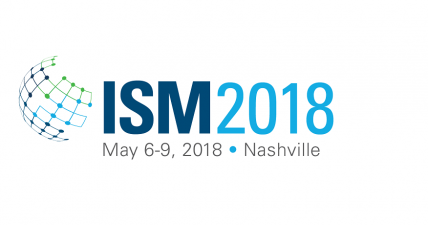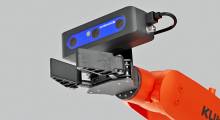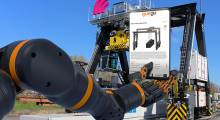I had a chance to talk with Tony Uphoff, Thomas’s president and CEO, at Monday’s reception in Nashville at ISM 2018. While we both work in supply chain management today, we share a long background in consumer magazine publishing in New York. We both were witness to the disruption caused by digitization on long-standing, and once successful, business models in that world. At the same time, Thomas has tried to get ahead of the curve by transitioning from a print-based company – what we all knew as Thomas Register – to a digital native organization.
After, it occurred to me that our shared magazine experience, and Thomas’s journey, is a metaphor for what’s going on in this industry. Without question, supply chain processes, from source to make to deliver, are in the midst of a similar digital transformation, one that will probably take place over the next 3, 5 or 10 years. Yes, it will be disruptive to supply chain management, but I also think that the digitization of the supply chain will enhance what we do rather than decimate it the way it has magazine publishing and retail.
That was driven home yesterday morning at the first session I planned on attending on Artificial Intelligence in procurement. I say planned because it was standing room only and I was turned away. I was able to stand in a queue to attend the subsequent packed session on block chain in procurement (spoiler alert: It may be coming, but it ain’t there yet and finding the sweet spot application is still a challenge right now). There were other sessions on block chain in the afternoon, and sessions on dashboards, analytics, machine learning, digital procurement, cyber security, control towers and a case study presentation on the digitization of a procurement organization. If you walk around the exhibition hall, a significant percentage of the booths are companies offering software and technology solutions. Clearly, technology is center stage, and probably rightfully so.
One reason for the popularity of some of these sessions is that we’re all trying to figure out just what are these new technologies, like the Internet of Things, AI, block chain, machine learning and robotic process automation (RPA). Most of us aren’t at the stage of applying them to our procurement organizations. But I think there’s also a recognition that the organizations that learn how to use technology to their advantage will have a competitive advantage. To that end, in a round table on Sunday, Deborah Stanton, the executive director of CAPS Research, noted that data analyst was one of the notable job categories identified in list of skills gaps in procurement. Susanna Zhu, Hershey’s CPO, noted that acquiring talent, including people with analytical skills, was the thing that keeps her up at night.
I asked Tom Derry, ISM’s CEO, what from the Chinese menu of new technologies does he think is going to have the most impact on procurement in the near future. “Robotic process automation,” was his answer. RPA, as it’s also known, is software that can be trained to do rote tasks that are now done by people. “In our surveys, about 30 percent of companies already have active pilots in RPA,” Derry said. “I think in the next 3 to 5 years, a majority of firms will have active RPA implementations.”
RPA could lead to a transformation of procurement organizations if adopted, eliminating some jobs that are currently handled by people now. At the same time, Derry added, “the new jobs will be maintaining the algorithms that automate processes. Companies are going to want that expertise in house rather than rely on consultants. And, once those skills are in house, they can be transferred to other parts of the organization.”
The digital revolution that Tony Uphoff and I lived through working in New York publishing was head spinning and, frankly, a little frightening. The digital revolution taking place in supply chain management may be head spinning, but it’s also exciting and seems full of opportunity for the companies that figure out how to use it first.
About the Author
Follow Robotics 24/7 on Linkedin
About the Author
Follow Robotics 24/7 on Linkedin
Article topics
Email Sign Up
















